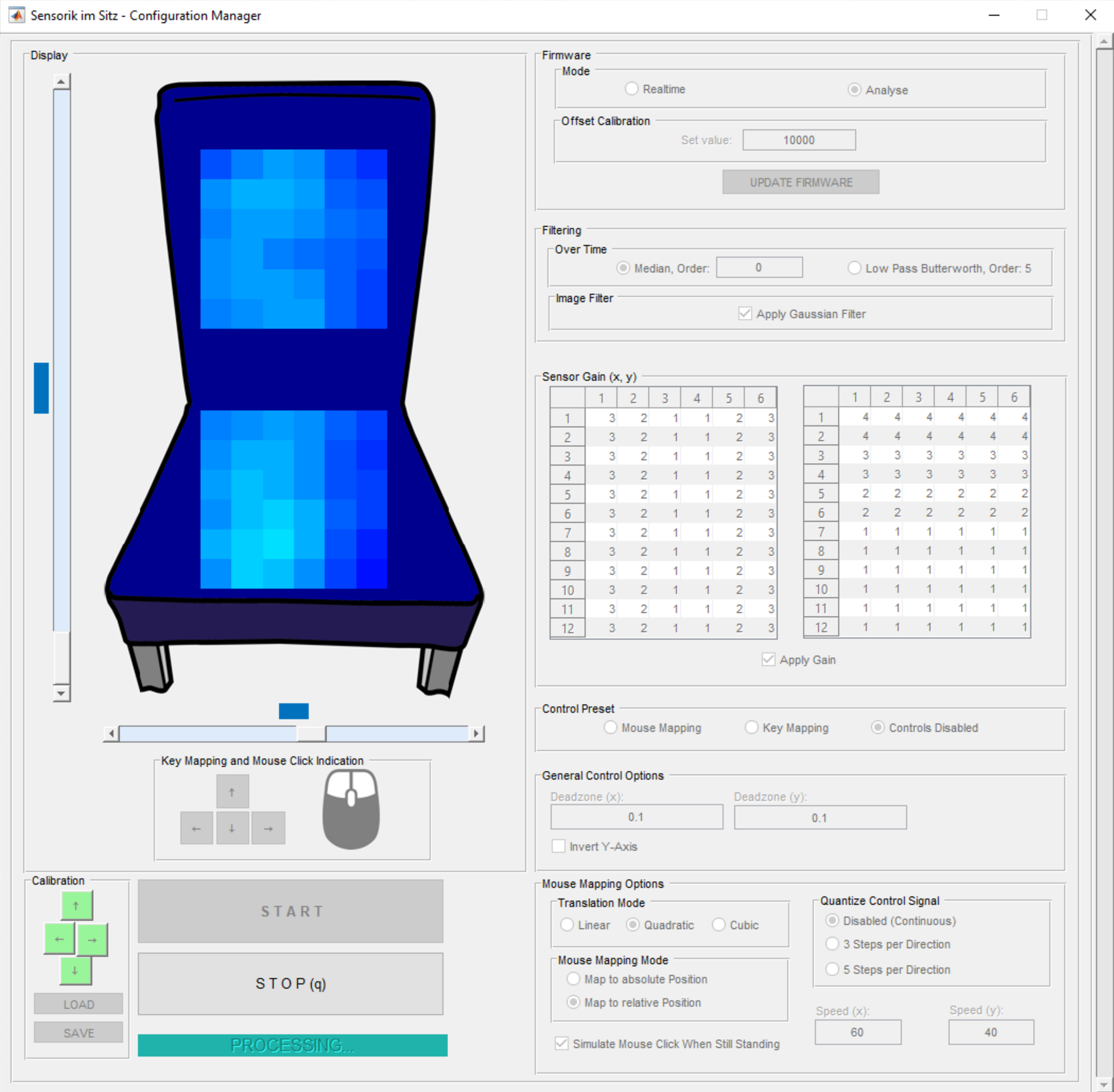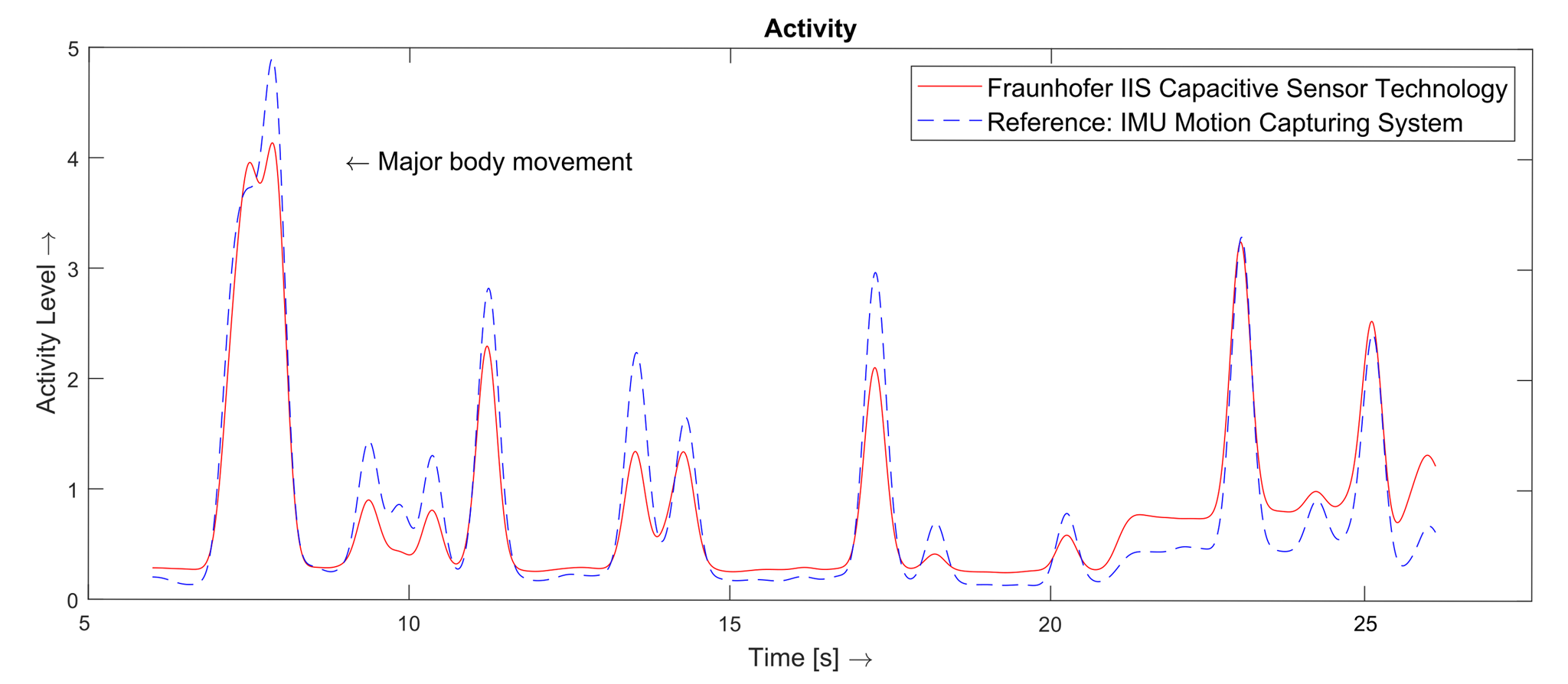A lot of us spend a large portion of their everyday working life sitting down. The possible consequences are back pain, stiff necks, or muscle tension due to the one-sided stress on the spine and muscles.
But how do we actually sit, and how should seating furniture be designed to promote better and healthier sitting?
Capacitive motion sensors embedded in seating surfaces and backrests collect information about sitting positions and movements of seated individuals. Similar to a smartphone touchscreen, 72 sensors register every movement in real time. Textile-integrated, capacitive motion sensing combines inconspicuous sensor technology for capturing body movements with robust algorithms for mapping and interpreting movement behavior while sitting.
This capacitive motion sensor technology is integrated into the »Smart Chair« technology demonstrator created by Fraunhofer IIS.
»Smart Chair« users can choose between two operating modes
- In analysis mode, the »Smart Chair« saves the captured data and calculates activity parameters offline to quantify the movements of the seated person.
- In real-time mode, the system is used as a standardized input device to control the computer mousend can thus be used as a human-machine interface.
In both operating modes, the data is sent via Bluetooth to a computer, on which the weight distribution of the seated person can additionally be visualized by means of false color imaging.


